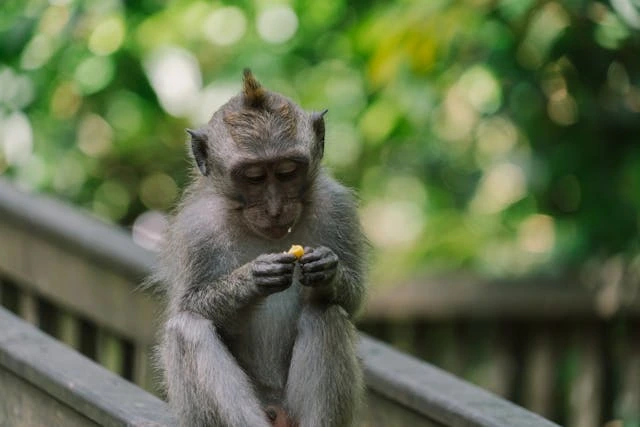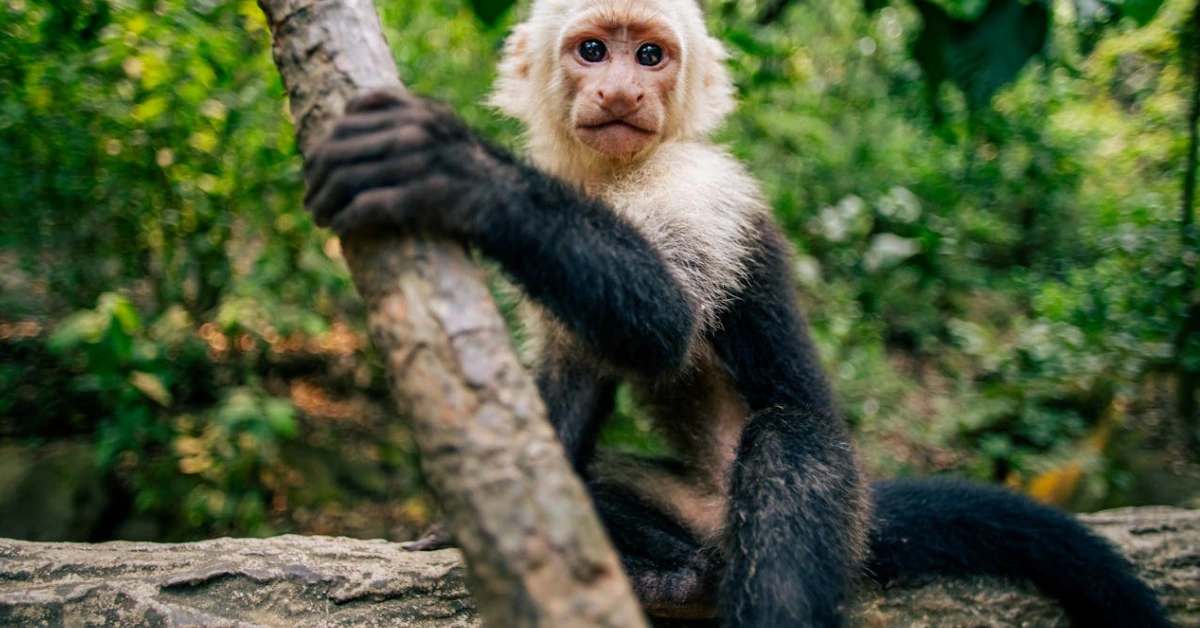“Did you know that owning a chimpanzee—a pet monkey with a 60-year lifespan—can cost over $70,000, surpassing the financial and temporal commitments of many human relationships?”
The allure of primates like capuchins, marmosets, and chimpanzees has captivated humans for centuries, their intelligence and human-like behaviors often romanticized in media as whimsical companionship. However, behind this fascination lies a stark reality: exotic pets like monkeys demand decades of specialized care, confront stringent legal restrictions, and ignite ethical debates about domestication. This article examines the specific species names—including macaques, tamarins, squirrel monkeys, guenons, and tarsiers—commonly kept as pets, alongside the harsh truths of their complex dietary needs, expansive enclosure requirements, and the moral weight of keeping wild animals in captivity.
Primates Kept as Pets: While the idea of owning a primate may seem enchanting, it demands rigorous primate care, navigates murky legal ownership of primates, and raises urgent ethical concerns with pet monkeys—challenges that far outweigh their fleeting charm and require deep understanding before considering such a commitment.
Table of Contents
I- The Appeal of Pet Primates
A. Why People Choose Primates
- Exotic Allure and Intelligence
- Primates captivate owners with their problem-solving abilities (e.g., capuchins using tools) and complex social behaviors.
- Human-like traits, such as empathy and curiosity, create a perception of companionship beyond traditional pets.
- Cultural Fascination
- Pop culture icons, like Michael Jackson’s pet chimpanzee Bubbles, reinforce primates as status symbols or novelty companions.
- Media portrayals often romanticize primate ownership, overshadowing practical challenges.
B. The Reality Check
- Behavioral Complexity
- Primates exhibit wild instincts: aggression, territoriality, and dominance hierarchies (e.g., macaques biting without warning).
- Training differs drastically from dogs/cats; primates resist traditional obedience and may challenge human authority.
- Unpredictable Risks
- Even “tamed” primates retain wild instincts, leading to sudden aggression (e.g., chimpanzees attacking caregivers).
- Lifelong needs for mental stimulation and space clash with typical household environments, causing stress-induced behaviors.
II- Types of Primates Kept as Pets
A. Smaller Primates
1. Tamarin: The Delicate “Pocket Monkey”
The Tamarin, a New World monkey often dubbed a pocket monkey species, weighs less than a pound but packs a punch in care demands. These primates require a secure primate enclosure with narrow bars to prevent escapes and UV lighting similar to marmoset UV light needs for proper bone development. Despite their size, their bite is surprisingly sharp, a fact underscored by searches like “Tamarin monkey as a pet,” which warn of their territorial nature and need for cautious handling.
2. Marmoset: High-Maintenance Miniatures
Marmosets, another pocket monkey species, charm owners with their squirrel-like energy. However, their primate dietary needs—insects, tree sap, and fresh fruit—are labor-intensive to replicate. Enrichment is critical, as boredom leads to self-harm. Queries such as “How to care for a marmoset monkey” reveal their aversion to handling, making them unsuitable for homes seeking interactive pets.
3. Squirrel Monkey: The Acrobatic Socialite
Known for their acrobatics, Squirrel Monkeys demand squirrel monkey housing requirements that prioritize vertical space and climbing structures. Their diet must include varied proteins and fruits, mimicking their wild foraging habits. Owners researching “Building an enclosure for a squirrel monkey” quickly realize these primates need environments that support constant motion to prevent stress-induced aggression.
4. Tarsier: The Nocturnal Enigma
The Tarsier, with its hauntingly large eyes, is rarely kept legally due to exotic pet legislation and permits. Nocturnal and fragile, they rarely adapt to captivity, often dying from stress. Questions like “Are tarsiers good pets?” highlight their incompatibility with domestic life and the ethical red flags surrounding their ownership.
B. Medium Primates
1. Capuchin: Intelligence with a Mischievous Streak
Renowned for capuchin monkey intelligence, these primates are sometimes trained as capuchin monkey service animals for disabilities. However, their care involves primate enclosures size exceeding 30 square feet and lifelong diapering as diaper-using primates. Searches for “How to care for a capuchin monkey” emphasize their destructive tendencies if not mentally stimulated—think dismantled furniture and escaped enclosures.
2. Macaque: A High-Risk Companion
Macaques, despite their expressive faces, pose zoonotic diseases risk, including herpes B, which is fatal to humans. Their primate aggression risks escalate during maturity, leading to attacks. Legal restrictions dominate discussions around “Risks of owning a macaque,” with many states outright banning their ownership.
3. Guenon: The Social Troop Dweller
Guenons thrive in groups, making Guenon monkey troop care essential. Isolated individuals often develop depression or aggression, underscoring their monkey socialization needs. Few private owners can replicate their natural troop dynamics ethically, leading to frequent rehoming or neglect.
C. Larger Primates
1. Chimpanzee: Strength Meets Danger
As great apes, Chimpanzees are not monkeys—but their inclusion in exotic pet ownership debates is unavoidable. Their chimpanzee dangers (maulings, fatalities) and 60-year lifespans make them a perilous choice. The phrase “Ethical issues with keeping chimpanzees as pets” dominates advocacy campaigns, with over 30 U.S. states banning their private ownership.
2. Spider Monkey: The Aging Aggressor
Spider Monkeys start as playful juveniles but often turn aggressive with age. Their care requires large climbing areas (20+ ft tall) and diapers for monkeys due to poor housebreaking. Prospective owners asking “Are spider monkeys good pets?” encounter warnings about their destructive behavior and the near-impossibility of finding reputable sanctuaries for surrendered adults.
III-Key Considerations for Owning a Primate
A. Legal Landscape: Navigating Ownership Laws
The legal ownership of primates is a patchwork of regulations, with states allowing pet monkeys (e.g., Texas, Florida) starkly contrasting “states where monkeys are illegal as pets” (e.g., California, New York). Primate ownership laws often mandate exotic pet permits, requiring proof of secure enclosures and veterinary access. Prospective owners must research phrases like “Legal requirements for owning primates as pets” to avoid fines or confiscation, as even legal species face tightening restrictions to curb wildlife trafficking.
B. Financial Burden: Beyond the Initial Price Tag
The pet monkey cost starts steep:
4,000–75,000 for species like capuchins versus chimpanzees (see “Cost of a chimpanzee vs. capuchin monkey”). However, lifetime expenses dwarf this—specialized veterinary care for primates, primate dietary requirements (fresh produce, insects), and primate enclosures size (up to $20,000 for large species) add up. Searches like “How much does a pet monkey cost?” reveal a harsh truth: this is a 30- to 60-year financial commitment, not a one-time purchase.
C. Care Demands: Time, Hygiene, and Expertise
Primate care is relentless. Monkey care requirements demand regular mental stimulation, such as interactive puzzles and vertical climbing setups, to curb destructive behaviors caused by boredom. Household pet challenges escalate with diapers for monkeys, as most primates cannot be housebroken (hence “Why do pet monkeys need diapers?”). Additionally, “Why primates require specialized veterinary care” underscores the scarcity of vets trained to treat zoonotic diseases or perform primate surgeries—a hurdle that delays critical medical attention.
D. Risks and Ethics: Beyond Cuteness
Owning primates carries zoonotic diseases in primates risks (e.g., herpes B from macaques) and primate aggression risks, even in hand-raised animals. The phrase “Dangers of keeping a pet primate” captures incidents of bites, maulings, and property damage. Ethically, “Ethical concerns of pet monkeys” dominate debates: primates’ high intelligence and social needs clash with captivity, fueling advocacy for bans. Many owners overlook the ethical responsibility of confining wild animals, resulting in lasting mental distress for the animal.

IV- Should You Get a Pet Monkey?
A. Pros: The Allure of Primate Companionship
For a select few, pet monkeys offer companionship rooted in their intelligence and human-like curiosity. Species like the capuchin—often hailed in searches for the “Best primate species for pets”—can even be trained as service animals, assisting individuals with disabilities. Their problem-solving skills and playful antics create a bond unlike traditional pets, appealing to those seeking a unique, interactive relationship.
B. Cons: The Harsh Realities of Domestication
However, wildlife and domestication rarely align. Animal behavior in captivity often leads to aggression, destruction, and stress, even in hand-raised primates. Pet monkey lifespan in captivity” (30–60 years) requires a “long-term commitment in pet care” that often surpasses human relationships—a core factor in “Primary considerations for keeping a capuchin as a pet. For example, the query “Primary considerations for keeping a capuchin as a pet” reveals challenges like lifelong diapering, costly enclosures, and the emotional toll of managing an animal that resists domestication.
C. Alternatives: Ethical and Sustainable Choices
Instead of ownership, consider “How to adopt a rescued pet primate” through accredited sanctuaries, providing care for animals already in captivity. Alternatively, support primate conservation efforts or volunteer at wildlife rehab centers. These options address the ethical concerns of pet monkeys while protecting wild populations—a far more humane response to the fascination with these complex creatures.
Conclusion
The allure of exotic pets like capuchins and chimpanzees lies in their intelligence and human-like charm, but ownership is fraught with challenges. From primate care complexities—such as diapers for monkeys and specialized diets—to legal restrictions and ethical concerns, the reality of keeping these animals clashes sharply with their initial appeal.
Species like macaques and squirrel monkeys demand lifetimes of commitment, while zoonotic diseases in primates and aggression risks underscore their incompatibility with domestic life.
Before asking, “Best pet monkey to own,” consider this: Should a wild creature, evolved for rainforests or savannas, be confined to a human home? The answer hinges on legal ownership of primates, unwavering dedication to primate enclosures size and care, and the moral implications of captivity.
Informed decisions demand acknowledging these animals’ wild essence—and often, the wisest choice is to admire them in nature or support sanctuaries, not force them into roles they were never meant to play.
Sources:
